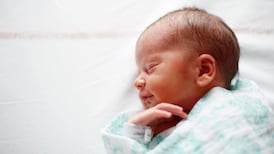The FBI is holding a criminal investigation into the anthrax contamination of the headquarters of American Media Inc, saying it suspected some kind of "foul play" was involved.
The contamination has resulted in the death of one man and the infection of a second . It is causing considerable bewilderment and concern, although the FBI says that as yet it has no evidence of "criminal intent". Senior investigators say the chances of the outbreak occurring naturally are diminishing dramatically as the investigation proceeds, even if there appears to be no evidence of any terrorist link. The obvious environmental sources of anthrax have been eliminated, said Ms Barbara Reynolds, a spokeswoman for the Centres for Disease Control and Prevention (CDC) in Atlanta.
The FBI and scientists from the CDC on Monday sealed off the offices in Boca Raton, Florida. They wore protective gear before going inside.
Virginia health officials said yesterday a third man suspected of being contaminated with the deadly anthrax virus tested negative.
Florida's Senator Bob Graham met the CDC director, Dr Jeffrey Koplan, on Monday. "I asked Dr Koplan what would be the likelihood that such a disease could have occurred without human intervention. His words were, `Nil to none'," Mr Graham said.
And the Attorney General, Mr John Ashcroft, also said the case could become "a clear criminal investigation".
AM publishes sensationalist tabloids like the Sun, whose photo editor, Bob Stevens, died on Friday of anthrax. The keyboard of Mr Stevens's computer is reported to have been contaminated with the virus spores.
His colleague, 73-year-old Mr Ernesto Blanco, was found to have anthrax spores in his nose, but had not developed any symptoms of the disease and is being treated with penicillin. Eight hundred employees and visitors to the office have also been tested and given antibiotics.
But the possibility of a deliberate attack is causing real concern. Dr Landis Crockett, director of disease control for the Florida Department of Health, said it was unusual to have two anthrax cases in such close proximity. He said human intervention may be responsible.
"The chances are one in a billion to have two anthrax cases," he said. "There then would be another explanation, foul play would be suspected."
Anthrax, which is not contagious in its naturally occurring form, is rare among humans but common in sheep, cattle, and goats. It can be picked up by inhaling bacterial spores which persist in the soil for many years. It has also been known to persist in wool and hides. Spores can survive being ground up, dried, buried or sprayed, coming back to life when they get to a warm, wet place like a human nose.
But "it is unheard of that you would find spores in a building like this," Dr Theresa Koehler, an anthrax expert at the University of Texas Health Sciences Centre in Houston, insisted. "In a textile mill or where people are processing animals, that is one thing. But this is another."
The last confirmed case in the US was recorded last year following an outbreak in a herd in North Dakota, and prior to that in 1992. Only 18 cases of inhalation anthrax were reported in the US during the 20th century, the most recent in 1976 in California. More common is a less serious form of anthrax contracted through the skin.
Antibiotics can treat anthrax, although the rare inhalation form that killed Mr Stevens is particularly lethal. Untreated, 90 per cent of victims die within days.
State epidemiologist Dr Steven Wiersma, said tests will help determine whether the anthrax found in Mr Blanco was natural or genetically-engineered.
Health officials have said the bacteria in Mr Stevens's blood responded to antibiotics, suggesting it was natural.
By a strange coincidence - or is it? - Mr Stevens lived about a mile from an air strip where the suspected leader of the September 11th hijackers, Mohamed Atta, rented aircraft. Several suspected hijackers also visited a crop-dusting business in Belle Glade, 40 miles from Mr Stevens's home.






